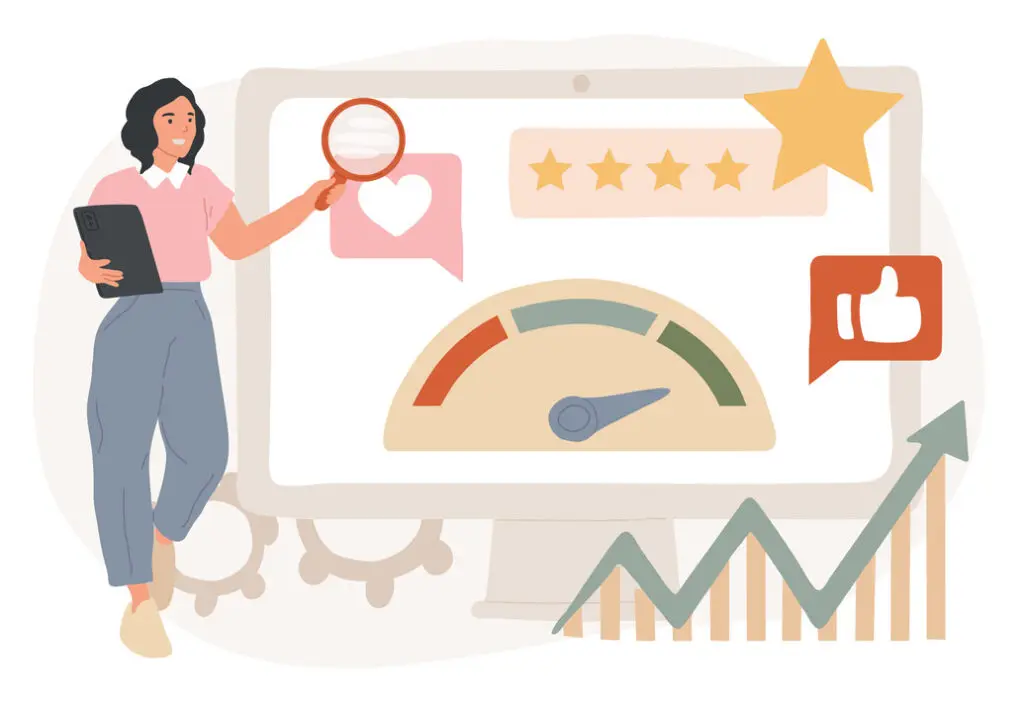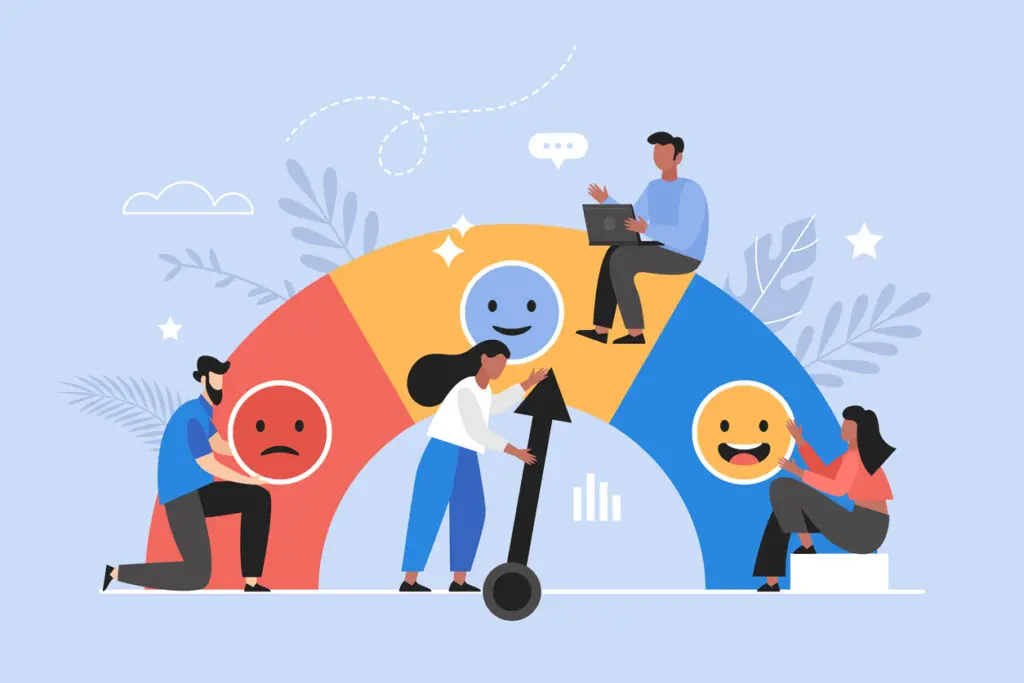‘Tis the season for giving, and what better gift to offer your website visitors than an exceptional user experience (UX)?
Just like holiday treats that bring joy and warmth, a well-crafted website can leave visitors feeling delighted too. Baking the perfect batch of cookies, and crafting a seamless UX requires the right ingredients and a little extra care. As the holidays approach, businesses are thinking about how they can end the year and start 2025 strong.
User engagement is everything when it comes to online success. It’s essentially the measure of how visitors interact with your site. When they enjoy browsing, they’ll linger, explore, and convert. But if the UX is frustrating or confusing, they’ll bounce faster than you can say “gingerbread cookies.”
In our last article of 2024, you’ll find the “perfect holiday recipe” for creating a user-friendly, engaging website that will leave visitors feeling satisfied—and hopefully, convert them into loyal customers. From optimizing site speed to creating intuitive navigation, we’ll walk through all the ingredients you need to deliver a website that’s as irresistible as those holiday cookies you can’t stop snacking on this season.
The Importance of User Engagement
Before we dive into the ingredients, let’s talk about why user engagement matters. It’s not just about how long someone stays on your site—it’s about how engaged they are during that time. Engagement directly impacts conversion rates, bounce rates, and overall customer satisfaction. High engagement is the goal. If you are doing this right it means your users are finding what they’re looking for and are motivated to take the next step—whether that’s signing up for your newsletter, making a purchase, or contacting you for more information.
But how do you know if your site’s UX is driving engagement—or pushing visitors away? Here are a few red flags to look for:
- High Bounce Rates: If visitors land on your site and leave quickly, it might be a sign that the UX is causing frustration. A bounce rate over 50% is typically a warning sign.
- Low Time on Site: If people aren’t sticking around to explore your content, your website may not be engaging enough.
- Poor Conversion Rates: If visitors aren’t taking the actions you want them to, like filling out forms or completing purchases, it could be a sign of confusion or friction in your site’s navigation or design. Identifying these issues early and fixing them promptly can prevent a significant loss of potential customers.
The Perfect Recipe for a Sweet User Experience

Prep Time: Ongoing, but worth every second.
Yield: Happier visitors, increased engagement, and higher conversion rates.
Ingredients
A Heaping Spoonful of Clear Navigation
- A clear navigation menu helps users quickly find what they’re looking for without getting lost and it gives visitors the confidence they need to explore your site and find what interests them. If your menu is cluttered or hard to understand, users will feel frustrated and may leave before they even see what you have to offer. To improve site navigation:
- Use descriptive, intuitive menu labels.
- Limit primary navigation items to 5-7 options.
- Add breadcrumbs to keep visitors oriented.
1 Cup of User-Centered Design (UCD)
- UCD places the needs, preferences, and behaviors of your users at the forefront of the design process.
- Focus on visual hierarchy: larger, bold elements for key content.
- Create wireframes, mockups, and interactive prototypes that reflect user needs and preferences to simplify layouts for clean, scannable pages.
- Incorporate clear calls-to-action (CTAs) for every journey stage.
1/2 Cup of Search Optimization Tools
- When users find answers quickly and easily, they are more likely to engage with your content, return to your site, and share it with others. A few ways to optimize content findability are:
- Add an internal search bar with tools like SearchWP or ElasticPress and optimize for voice search with tools like SEMrush and Moz and track the search queries
- Optimize metadata to make key pages discoverable. SEO tools like SEMrush, Moz, or Surfer SEO can analyze your website’s meta tags, including titles, descriptions, and alt text, to ensure they’re both informative and optimized for search engines.
2 Tablespoons of Audience Insights
- Gathering direct feedback from your audience through surveys, usability testing, or on-site feedback tools. This allows you to capture real-time insights into how your users feel about their experience and the continuous feedback loop can drive iterative improvements.
Example: Running a survey that asks users about specific aspects of the site (e.g., ease of navigation, content relevance, etc.) will highlight areas for improvement that might not have been obvious otherwise.
- Use analytics tools like Mouseflow (heatmaps) or Google Analytics to track user paths and see where people tend to get stuck or drop off to support a smoother experience.
A Dash of Personalized Content
- Leverage your Audience insights to help you understand what specific user segments are looking for then feature tailored recommendations such as blog articles, resources, or services to meet the needs of different users.
- Use tools like Jetpack or HubSpot to display related content dynamically. Dynamic content is powered by technologies like cookies, session data, user profiles, database queries, and content management systems (CMS) like WordPress and Drupal that can fetch and display relevant content based on real-time data.
Example: E-commerce sites often show personalized product recommendations based on previous browsing or purchase history. Streaming services, like Netflix, suggest movies and shows based on viewing habits.
Sprinkles of Engaging Visuals — the key element of effective web design
- When used correctly visuals significantly enhance UX, boost engagement, and communicate messages more clearly. When designed thoughtfully, visuals create a memorable experience, guiding users through the content, and encouraging them to take action.
Examples of engaging visuals you might see on websites are: scroll-triggered animations or scrolling effects, image galleries, hover effects, infographics and data visualizations, micro-animations, and sliders & carousels.
- Be sure to include relevant imagery and video for your audience’s interests.
- Balance aesthetics with page performance and accessibility. You can optimize assets with tools like Imagify.
1 Cup of Fast, Responsive Performance
- Load speed can have negative effects on user engagement. Even if you added in all the ingredients above, your site may still fall flat or send users away if it doesn’t load faster than 3 seconds. So ensure your site loads quickly with caching tools like WP Rocket.
- Test mobile performance and responsiveness with SiteImprove or Browserstack.

Instructions
Step 1. Mix Clear Navigation with User-Centered Design
Start with a foundation of intuitive navigation paired with layouts that guide users effortlessly. Like sifting flour, this step removes unnecessary friction, ensuring visitors can find what they’re looking for.
Step 2. Blend in Personalization and Search Tools
Think of this as adding the secret ingredient. An internal search bar paired with dynamic, tailored content recommendations ensures every user feels catered to – like the perfect cookie baked just for them.
Step 3. Sprinkle Audience Insights for Precision
Use tools like Mouseflow heatmaps to identify where users linger or get stuck. Refine the user journey based on real behavior, not guesswork.
Step 4. Bake for Speed and Responsiveness
Optimize your site performance to ensure it’s fast and seamless across all devices. A responsive, high-speed site keeps users exploring longer, driving engagement and conversions.
Step 5. Decorate with Engaging Visuals and Interactive Elements
Add the finishing touch – stunning visuals, videos, and interactive tools that inspire visitors to click, scroll, and explore.

How will you know if it’s working?
When a website provides a seamless, enjoyable experience, users are more likely to explore further leading to those conversions you seek. When your users feel at ease and confident on your site, they’re more likely to:
- Click through multiple pages
- Engage with your content
- Make a purchase or contact you
Signs that are striking the right balance with your UX are:
- Low Bounce Rates: A bounce rate under 40% indicates that users are sticking around to explore your site.
- High Session Duration: If users are spending time reading your content or browsing your products, it’s a sign they’re engaged.
- Increased Conversions: A higher conversion rate means your CTAs are working and your visitors are taking action.
Measuring the success of website UX improvements over time is crucial for understanding the impact of changes, refining strategies, and ensuring continuous growth. Businesses need a comprehensive view of how UX improvements are affecting user engagement, satisfaction, and conversions. By combining quantitative data (like analytics and conversion rates) with qualitative insights (like user feedback and behavior tracking) over time, businesses can understand how changes are affecting user engagement and identify areas for ongoing improvement.
Successful measurement also involves testing and iteration. We recommend regularly conducting A/B tests, analyzing user behavior, and gathering direct feedback to guide the refinement of UX strategy and provide the best possible experience for users.
By identifying and correcting UX problems before they escalate into bigger issues you will provide great UX and help visitors feel welcome, understood, and eager to come back for more.

The Culture Foundry Touch
At Culture Foundry, we understand that UX is about more than just design and functionality—it’s about creating a website that feels good to use and makes visitors feel valued. We help you bake up the perfect combination of form, function, and user-centered design to ensure your site delivers a delightful experience, just like your favorite holiday treat.
Ready to Serve Up a Sweet User Experience?
If you’re ready to transform your website into a treat your visitors can’t resist, we’re here to help. Let’s work together to create a UX that keeps your audience engaged, increases conversions, and leaves a lasting impression.
Contact us to get started, and let’s make your website the gift that keeps on giving all year!


